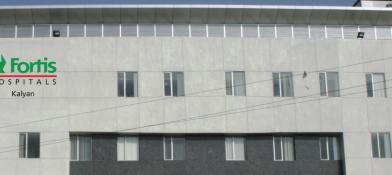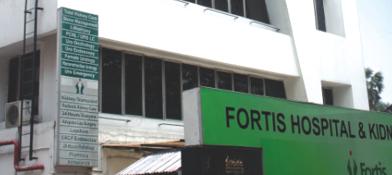Cardiac Catheterization: The Gold Standard for Diagnosing and Treating Heart Disease
Cardiac catheterization is a highly specialized, minimally invasive procedure that serves as the definitive gold standard for diagnosing and, in many cases, treating a wide variety of heart conditions, most notably Coronary Artery Disease. The procedure, often referred to as a "cardiac cath" or "coronary angiogram," involves guiding a very thin, flexible tube called a catheter through a blood vessel in your wrist or groin and advancing it up to your heart.
This allows an interventional cardiologist to perform a series of crucial diagnostic tests directly inside the heart, providing a level of detail and accuracy that cannot be achieved with non-invasive imaging alone. It offers a real-time, dynamic view of your heart's arteries, chambers, and valves. The most common reason to perform a cardiac catheterization is to conduct a coronary angiogram, where a special contrast dye is injected through the catheter to create a clear X-ray map of the coronary arteries, revealing the precise location and severity of any blockages.
What makes this procedure so powerful is that it can seamlessly transition from a diagnostic test to a life-saving treatment. If a significant blockage is found, the cardiologist can often proceed immediately with a therapeutic intervention, such as an angioplasty and stenting, to open the blocked artery in the same session. This capability is especially critical during a heart attack, where a cardiac cath and subsequent angioplasty can stop the attack in its tracks and save heart muscle.
What is Cardiac Catheterization? The Procedures Performed
Cardiac catheterization is not a single test but a platform that allows your cardiologist to perform a variety of diagnostic and therapeutic procedures. The entire process takes place in a specialized hospital room called a cardiac catheterization laboratory, or "cath lab," which is equipped with advanced imaging and monitoring technology.
Coronary Angiography
This is the most common diagnostic procedure performed during a cardiac cath.
- Purpose: To visualize the coronary arteries, the vessels that supply blood to the heart muscle itself, and to identify any areas of narrowing or blockage caused by atherosclerosis.
- Procedure: A special iodine-based contrast dye is injected through the catheter directly into the coronary arteries. This dye is opaque to X-rays. A sophisticated X-ray machine called a fluoroscope then takes a rapid series of images, creating a detailed video-like map, or angiogram, of the arteries and the blood flowing through them.
Advanced Coronary Artery Assessment
For blockages that are of intermediate severity, your cardiologist may use advanced techniques to determine their true significance.
- Fractional Flow Reserve FFR: This technique uses a special pressure-sensing wire that is passed through the catheter and across the blockage. It measures the pressure difference before and after the narrowing to determine if the blockage is truly limiting blood flow to the heart muscle and therefore requires treatment.
- Intravascular Ultrasound IVUS and Optical Coherence Tomography OCT: These are advanced imaging techniques where a miniature ultrasound or light-based probe is placed on the tip of the catheter. This provides a high-resolution, cross-sectional view from inside the artery, allowing the doctor to see the plaque buildup in incredible detail and to ensure a stent, if placed, is perfectly positioned.
Hemodynamic Assessment and Right Heart Catheterization
- Purpose: To measure the pressures inside the different chambers of the heart and the major blood vessels. This information is vital for diagnosing and managing conditions like heart failure, pulmonary hypertension, and heart valve disease.
- Procedure: For a right heart catheterization, the catheter is inserted through a vein and guided into the right atrium, right ventricle, and pulmonary artery to measure pressures on the right side of the heart. For a left heart assessment, the catheter in the aorta can measure the pressure gradient across the aortic valve, and it can be advanced into the left ventricle to assess its function.
Ventriculography
- Purpose: To evaluate the pumping function of the heart's main pumping chamber, the left ventricle.
- Procedure: A larger volume of contrast dye is injected into the left ventricle, and an X-ray video is taken as the heart pumps. This allows the doctor to calculate the ejection fraction which is the percentage of blood pumped out with each beat and to identify any areas of the heart wall that are weakened or not moving correctly.
When is Cardiac Catheterization Recommended?
Your doctor may recommend a cardiac catheterization for a number of important reasons.
- To Diagnose Coronary Artery Disease CAD: This is the primary indication. It is recommended if you have symptoms of angina such as chest pain, tightness, or shortness of breath, or if you have had an abnormal result on a non-invasive stress test.
- During a Heart Attack Myocardial Infarction: This is an emergency procedure. A cardiac cath is performed immediately to identify the completely blocked artery that is causing the heart attack. This is followed by an emergency angioplasty, known as a primary PCI, to open the artery and restore blood flow.
- To Evaluate and Treat Heart Valve Disease: To measure the pressure gradients across narrowed stenotic or leaky regurgitant valves to determine their severity and the need for valve surgery or replacement.
- To Assess the Cause of Heart Failure or Cardiomyopathy: To look for underlying blockages and to measure heart pressures to guide treatment.
- To Diagnose Congenital Heart Defects: To visualize structural problems in the heart that have been present since birth.
- As a Pre-Operative Requirement: It is a standard procedure before open-heart surgery, such as coronary artery bypass grafting CABG, to provide the surgeon with a detailed roadmap of the blockages that need to be bypassed.
From Diagnosis to Treatment: Angioplasty and Stenting
One of the most powerful aspects of cardiac catheterization is the ability to immediately treat a problem once it is diagnosed. If your angiogram reveals a critical blockage, your interventional cardiologist can often proceed directly to an intervention called a Percutaneous Coronary Intervention PCI.
- Percutaneous Transluminal Coronary Angioplasty PTCA: A tiny, deflated balloon on the tip of a catheter is guided to the site of the blockage. The balloon is then inflated, which compresses the fatty plaque against the artery wall, widening the artery and restoring blood flow.
- Stent Placement: After the artery is opened with the balloon, a tiny, expandable, mesh-like metal tube called a stent is usually deployed in the same location. The stent is expanded into place and acts as a permanent scaffold to keep the artery open and prevent it from re-narrowing. Most modern stents are Drug-Eluting Stents DES, which are coated with a medication that is slowly released to help prevent scar tissue from growing back into the artery.
Our Specialists
Cardiac catheterization and interventions are performed by highly trained interventional cardiologists in state-of-the-art cath labs. Our team includes some of the most experienced and globally recognized pioneers in the field.
Dr. Naresh Kumar Goyal
PRINCIPAL DIRECTOR & HOD CARDIOLOGY & HEART FAILURE PROGRAMME | Fortis Shalimar Bagh
Dr. Nishith Chandra
PRINCIPAL DIRECTOR CARDIOLOGY | Fortis Okhla
Dr. Z S Meharwal
CHAIRMAN & HEAD- ADULT CARDIAC SURGERY | Fortis Okhla
Patient Stories
"I had been experiencing chest pain whenever I walked uphill, and my stress test was abnormal. My cardiologist at Fortis recommended a coronary angiogram. I was nervous, but the team was incredible. They accessed the artery through my wrist, so the recovery was much easier. The angiogram showed a 90% blockage in one of my main arteries. The doctor explained everything on the screen and, with my consent, proceeded to place a stent right then and there. The relief from the angina was almost immediate." - Rakesh Sharma, 62, Gurugram
"I was having a heart attack. The pain was immense. I was rushed to the Fortis emergency room, and within minutes, I was in the cath lab for a primary angioplasty. I was awake but sedated, and I remember the team working with incredible speed and professionalism. They found the blocked artery and opened it with a stent. The doctor told me, 'time is muscle,' and their quick action saved my life and my heart. The cardiac cath procedure was not just a test; it was my lifeline." - Anjali Verma, 55, Delhi
The Cardiac Catheterization Procedure: A Detailed Walkthrough
Preparation for the Procedure
- You will be instructed to fast for six to eight hours before the procedure.
- You will have some pre-procedure tests, including a blood test to check your kidney function as the contrast dye is cleared by the kidneys, an ECG, and a chest X-ray.
- You must inform your doctor of all your medications, especially blood thinners and diabetes medications, as you will be given specific instructions on what to take and what to stop.
The Procedure in the Cath Lab
- Preparation: You will be taken to the cath lab and will lie on a procedure table. You will be connected to monitors that track your heart rhythm, blood pressure, and oxygen levels. An IV line will be placed in your arm. You will be given a mild sedative to help you relax, but you will be awake and able to communicate.
- Access Site: The doctor will decide on the best access point, either the radial artery in your wrist or the femoral artery in your groin. The area will be cleaned, and a local anesthetic will be injected to numb the skin completely.
- Catheter Insertion: Once the area is numb, the doctor will insert a small sheath into the artery. You will feel some pressure but no sharp pain. The long, thin catheter is then inserted through this sheath and gently guided up to your heart using fluoroscopy X-ray imaging.
- The Angiogram: Once the catheter is in position at the opening of a coronary artery, the contrast dye is injected. As the dye fills the artery, you may feel a warm, flushing sensation throughout your body, which is normal and lasts for only a few seconds. A series of X-ray videos are recorded from different angles.
- Completion: After all the necessary images and measurements are taken, the catheter is removed.
After the Procedure
Access Site Management: This is a crucial part of recovery.
- Groin Approach: A nurse or doctor will apply firm manual pressure to the site for 15-20 minutes, followed by a pressure dressing. You will need to lie flat on your back for four to six hours to prevent bleeding.
- Wrist Approach: A special compression band is placed around your wrist, which is gradually loosened over a couple of hours. This approach allows you to sit up and walk around much sooner.
Hospital Stay: For a diagnostic angiogram, you may go home the same day or stay overnight for observation. If you had an angioplasty with a stent, you will typically stay in the hospital for at least one night.
Myths vs Facts
Take the Next Step
A cardiac catheterization is a powerful and essential tool in the diagnosis and treatment of heart disease. It provides your cardiologist with the most accurate and detailed information possible, allowing for a precise diagnosis and, in many cases, immediate, life-saving intervention. It has revolutionized how we treat heart attacks and has allowed millions of people with coronary artery disease to live longer, healthier lives.
If you are experiencing symptoms of heart disease or have been advised by your doctor to undergo this procedure, it is natural to have questions and concerns. A detailed discussion with an interventional cardiologist is the best way to understand the benefits and risks for your specific situation. Our team is committed to providing you with world-class, compassionate care every step of the way.
CTA: Book a Cardiology Consultation / Get a Second Opinion
Frequently Asked Questions
Q1. How long does the cardiac catheterization procedure take?
Ans. A diagnostic coronary angiogram typically takes about 30 to 45 minutes. If an angioplasty and stenting procedure is also performed, it may take an additional one to two hours.
Q2. Will I be awake during the procedure?
Ans. Yes, you will be awake but will be given a mild sedative to help you feel relaxed and comfortable. This allows you to communicate with the doctor and follow instructions, such as taking a deep breath or holding your breath for a few seconds during the imaging.
Q3. What are the main risks of the procedure?
Ans. Cardiac catheterization is a very safe procedure in experienced hands. The most common complications are related to the access site, such as bleeding or bruising. More serious but rare risks include an allergic reaction to the contrast dye, damage to the artery, stroke, or heart attack. Your doctor will discuss all potential risks with you in detail.
Q4. What is the radial approach versus the femoral approach?
Ans. The femoral approach involves accessing the heart through the femoral artery in the groin. The radial approach involves using the radial artery in the wrist. The radial approach is now preferred in many cases as it is more comfortable for the patient, allows for earlier mobility after the procedure, and has a lower risk of bleeding complications.
Q5. When can I return to my normal activities?
Ans. After a diagnostic angiogram, you can usually return to light activities the next day. After an angioplasty and stenting, you will need to avoid strenuous activity and heavy lifting for about a week. Your doctor will give you specific instructions.
Q6. Is the procedure covered by insurance?
Ans. Yes, cardiac catheterization, including coronary angiography and angioplasty with stenting, is a standard and medically necessary procedure for the diagnosis and treatment of heart disease and is covered by all major health insurance plans in India.
Q7. Will I need to take medications for life after getting a stent?
Ans. Yes. After receiving a stent, it is absolutely essential that you take dual antiplatelet therapy, usually aspirin and another medication like clopidogrel, for a prescribed period typically one year to prevent blood clots from forming in the stent. You will likely need to take aspirin and a statin medication for the rest of your life.
Q8. What does "time is muscle" mean in the context of a heart attack?
Ans. This is a critical concept in emergency cardiac care. During a heart attack, a coronary artery is completely blocked, and the heart muscle supplied by that artery begins to die due to lack of oxygen. The longer the artery remains blocked, the more heart muscle is permanently damaged. "Time is muscle" means that the goal of an emergency cardiac cath and angioplasty is to open the blocked artery as rapidly as possible to save as much heart muscle as possible.






































